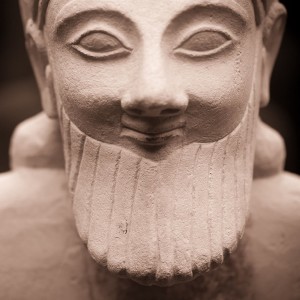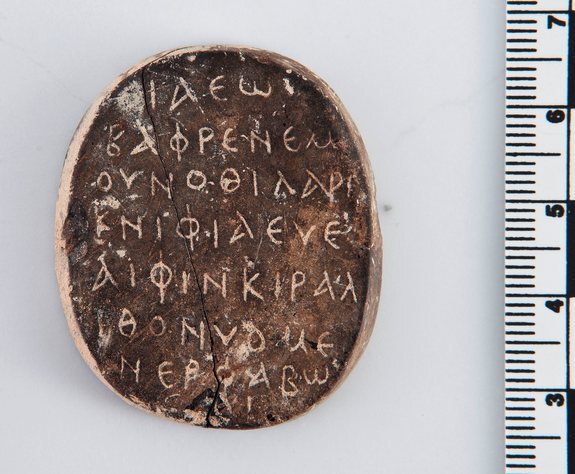The History of Cyprus Podcast
Welcome to The History of Cyprus Podcast -- a monthly series exploring the island’s past from 10,000 BCE to the 20th century. Each episode features in-depth conversations with leading scholars in archaeology, linguistics, political and social history, bringing academic insight to a wide audience. Together, we uncover the languages, cultures, conflicts, and legacies that shaped one of the Mediterranean’s most storied crossroads. Whether you’re a student, a history enthusiast, or just curious about Cyprus, this podcast offers something for everyone -- rooted in research, driven by storytelling. If you’d like to reach me, my name is Andreas. Please feel free to send me an email at cyprusthepodcast@gmail.com --------------------------------------------------------------- Follow The History of Cyprus Podcast Instagram and support the show on Patreon: https://www.patreon.com/TheHistoryofCyprusPodcast https://instagram.com/thehistoryofcyprus *The podcast image, ”Dressed for the Gods” (250BC) is from the British Museum taken by William Warby. Check out more of his work at flickr.com/photos/wwarby/
Episodes

Tuesday Jan 02, 2024
Tuesday Jan 02, 2024
Aphrodite is associated with love, beauty and, I learn -- quite erroneously -- with fertility. Often through this sanitized lens, we lose sight of who Aphrodite was: the Goddess of Sex. But who was she? What are her origins? How was she understood in antiquity? And, perhaps more importantly, why is she so intimately associated with Cyprus? Join me as I interview historian and prolific author, Dr. Stephanie Budin, as we discuss "The Kyprogenes."

Friday Dec 15, 2023
Friday Dec 15, 2023
Cyprus has been intimately associated with the Greek goddess Aphrodite for centuries. According to Hesiod, in a calculated act of violence, she was born from the severed genitals of Ouranos near the coast of Cyprus. It is one of the earliest surviving works of Greek literature and is considered a foundational text of Greek mythology.
But who exactly was Aphrodite that is so associated with Cyprus? Next month, my guest is prolific author and historian, Stephanie Budin, who discusses the origins of "The Goddess," of Aphrodite, our "Kyprogenes."

Saturday Dec 02, 2023
Saturday Dec 02, 2023
Stavroula Varella (King's College London) joins me this month to discuss the origins of the modern Cypriot Greek dialect. We explore the meaning and origins of a myriad of words (e.g., ίντα, θωρώ, έσσω, ηὗρεν and έννε...) and their possible roots. We touch on all the parent languages that inform the Cypriot vernacular including French, Italian, Turkish & English and not only identify potential etymologies (which, I learn, is notoriously difficult) but also their mode and places of transmission. You won't want to miss this!

Wednesday Nov 15, 2023
Wednesday Nov 15, 2023
Listen closely. You'll hear snippets of the Cypriot Greek dialect in this excerpt from the Chronicles of Leontios Machairas as he describes a particularly compelling event during Genoese invasion of Nicosia in the 14th century. But this excerpt was chosen not for the story per se. Rather, it was chosen for its rich Cypriot vernacular. Word use, such as θωρώ (i.e., to see) heard in this excerpt, have their roots in antiquity (see: θεωρῶ) and were preserved from the Koine into medieval Greek. Many are commonly used today in Cypriot vernacular. Other noticeable words in this recording, such as έσσω (home) and ηὗρεν (found), should be familiar to the modern ear. The Chronicles of Leontios Machairas is one of our earliest sources that both documents the historical developments in medieval Cyprus and provides us the distinct beginnings of the modern Cypriot dialect (though not the first. That would be the medieval law code, The Assizes). There are, however, roots that may go further back into antiquity. Next month, I invite Stavroula Varella (King's College London) author of the fantastic book "Language Contact and the Lexicon in the History of Cypriot Greek" to discuss the origins and evolution of the Cypriot Greek dialect!
...and if you've enjoyed this particular Primary Source, please consider becoming a Patreon member! https://www.patreon.com/TheHistoryofCyprusPodcast For as little as $1 a month, your financial support helps keep the podcast ad-free, offsets the costs of hosting the podcast and funds future primary source recordings like the one you just enjoyed. All members, regardless of which tier they subscribe to, can have access to this month's primary source recording entirely in its Medieval Greek, allowing you to get a better sense of the nuances of the Cypriot dialect in full! And if you become a third tier member, you can have early access to upcoming episodes. Thank you for your support in helping make The History of Cyprus accessible to all!

Thursday Nov 02, 2023
Thursday Nov 02, 2023
A dragoman was an interpreter and guide who facilitated communication between individuals or groups who spoke different languages, particularly in the context of diplomatic, commercial, or cultural exchanges. During the Ottoman Empire, the position of dragoman was highly respected and influential. For Part 2 of my interview with Antonis Hadjikyriacou, we discuss the impact of Hadjigeorgakis Kornesios in 19th century Cyprus.
***Apologies for the audio quality on my end. My external microphone refused to connect prior to the recording.

Sunday Oct 15, 2023
Sunday Oct 15, 2023
Cabi Omer Efendi was an Ottoman statesman and military commander who lived from 1750 to 1814. He served as the Grand Vizier of the Ottoman Empire three times, and was known for his military successes, administrative skills, and political influence. For this month's primary source, he provides a direct account of the execution of Dragoman Hadjigeorgakis Kornesios in 1809 and as a springboard for Part 2 of my interview with Professor of Ottoman and Turkish Studies, Antonis Hadjiantoniou. The text in full:
"The dragoman of Cyprus caused sedition and discord by performing a great deal of villainy to the Muslim worshippers. He escaped from Cyprus, and when he arrived at Istanbul he was then arrested and executed in front of the Sublime Gate. His corpse was put upside-down in the basket of a broom-seller, carried around, and left outside the gate of the fish market. He thus became a warning to others. He was going to escape to Russia by converting his property and cash to bills of exchange. His house in Beşiktaş was given to the Chief tax inspector. It was rumored that all his property and cash totaled 5,500,000 kurush."
-Cabi Omer Efendi 1809

Monday Oct 02, 2023
Monday Oct 02, 2023
The Ottoman Period in Cyprus, which lasted from 1571 to 1878, was a significant era in the island's history as it had a lasting impact on its culture, society, and economy. During this period, the Ottoman Empire brought Islam to the island and established a system of local administration through appointed governors and officials. This resulted in a diverse population with a mix of Greek Orthodox Christians and Turkish Muslims. The Ottomans also left their mark on the island's architecture, art, and cuisine. The Ottoman Period also saw significant economic development, with the introduction of new crops such as tobacco and the establishment of trade links with other parts of the Ottoman Empire. This is part one of two part interview with Panteion & Stanford University Professor of Ottoman and Turkish Studies, Antonis Hadjikyriacou.
***Apologies for the audio quality on my end. My external microphone refused to connect prior to the recording.

Friday Sep 15, 2023
Friday Sep 15, 2023
Sokullu Mehmed Pasha was a prominent Ottoman statesman who served as the grand vizier (chief minister) of the Ottoman Empire for over a decade during the 16th century, under the reigns of Suleiman the Magnificent and Selim II. In this excerpt, he addresses the Venetian Ambassador, acknowledging their recent defeat at the Battle of Lepanto but reminding them that they now have Cyprus in their hands. Next month we have a two part interview with Professor of Ottoman and Turkish History, Antonis Hadjikyriacou. Here is the text in full:
"I am sensible, Ambassador. You have desired this audience with no other intention than to show the pretentiousness natural to your countrymen. I advise you as a friend, to lay aside those vain airs and consider that though you have indeed shaved us pretty close in Lepanto, we have shaved off your arms. And as the beard, when shaved, grows bigger than before, so our fleet, unless our woods fails us, will in a short space become larger and more numerous, whilst you can’t so much as think of recovering your arms -- for so I call the spacious and famous kingdom of Cyprus."
- Grand Vezier Sokullu Mehmet Pasha addressing the Venetian Ambassador, 1571

Saturday Sep 02, 2023
Saturday Sep 02, 2023
My guest this month is Dr. Jean-Denis Vigne, Emeritus Director of Research from the Natural History Museum in Paris. In this episode, we discuss the oldest farming village in a Mediterranean island (i.e., Klimonas) in addition to the significance of the Chirokitia Culture to the Neolithic Period and, of course, the earliest possible evidence of felid (cat) domestication: his finds in Shillourokambos that transformed our understanding of the period.

Tuesday Aug 15, 2023
Tuesday Aug 15, 2023
If you have ever visited Cyprus, you would have certainly noticed the abundance of cats on the island. On his way to Jaffa in 1484, the Venetian Friar, Francesco Suriano, noticed the same thing. His observations on the number of cats on the island is a perfect springboard in introducing my next month's guest: Dr. Jean-Denis Vigne, esteemed paleozoologist and Emeritus Director of Research at the Natural History Museum in Paris. His digs in Cyprus have changed our understanding of prehistory on the island and it is his work at Shillourokambos that revealed the earliest evidence of tamed cats. Please join me next month as I interview Dr. Vigne and discuss Cyprus and the first cats!
Don't forget to follow the History of Cyprus Podcast on Instagram and support the Channel through Patreon!











